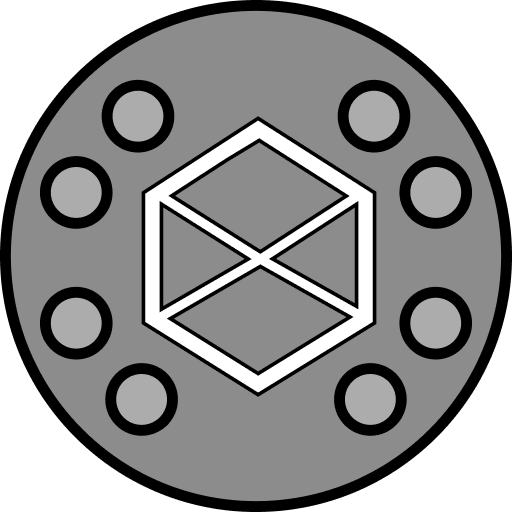Partior is a blockchain system designed to enhance cross-border payments and financial market infrastructure. Developed through a collaboration of major banks, it leverages distributed ledger technology to provide faster, cheaper, and more transparent settlement processes for cross-border transactions. The name “Partior” comes from Latin, meaning “to distribute” or “to share,” reflecting its mission to improve money flow across borders.
Introduction
Partior is a fintech initiative aiming to revolutionize global payments. By moving away from traditional correspondent banking networks, which are often slow and expensive, it utilizes blockchain technology to accelerate settlements.
Through shared digital currency infrastructure, Partior enables banks and financial institutions to settle payments instantly, regardless of location. This reduces dependence on intermediaries and introduces better liquidity management and visibility.
History of Partior
Partior began in 2021 as a joint venture between DBS Bank, JP Morgan, and Temasek Holdings, a Singapore-based investment company. It evolved from earlier blockchain experiments, including Project Ubin, a central bank-led initiative exploring blockchain for settlements and payments.
Partior was established as a for-profit entity to bring Project Ubin’s findings into practical use, initially focusing on cross-border payments and multi-currency settlements. Over time, the platform has expanded partnerships with additional financial firms and central banks, aiming to become a standard for digital settlement infrastructure.
Technology and Security
Partior relies on distributed ledger principles, ensuring all participants share a single, synchronized version of transaction records.
Shared Ledger – All transactional activities are recorded on a single ledger, removing delays and discrepancies caused by reconciliation across separate bank ledgers.
Programmable Money – The system enables tokenized deposits, representing digital versions of bank funds. These can be customized for instant settlement, conditional payments, or liquidity optimization.
Security and Compliance – Access is permissioned, allowing only verified participants. Transactions are cryptographically secured and changes are consensus-based, ensuring integrity.
This combination of blockchain transparency and banking-grade security provides a globally safe settlement environment.
Traditional cross-border payments involve slow correspondent networks with high fees and opaque practices. Partior addresses these issues through tokenized deposits, enabling real-time fund transfers across borders without multiple intermediaries.
Liquidity management improves, as funds can be deployed instantly. This creates an efficient system for major institutional transactions, with potential applications in retail payments, trade finance, and other financial services.
Supported Currencies and Assets
Initially, Partior covered the US dollar (USD) and Singapore dollar (SGD). As more banks join, additional currencies are supported.
The system handles multiple fiat currencies through tokenized deposits rather than cryptocurrencies or stablecoins. It bridges digital settlement infrastructure with conventional finance, allowing experimentation with central bank and commercial bank digital currencies while avoiding unregulated assets.
Partnerships and Community Role
Partior collaborates with leading banks and financial institutions to strengthen liquidity and expand currency coverage.
It demonstrates the integration of blockchain with regulated financial systems. Unlike fully decentralized networks, Partior operates in a controlled environment, appealing to large financial institutions and central banks. Its societal contribution includes not only infrastructure provision but also showcasing practical deployment of distributed technology.
Features of Partior
Partior’s key features include:
Immediate Settlement – Payments are processed instantly, minimizing operational risk.
Transparency – A shared ledger ensures greater auditability and fewer disputes.
Interoperability – Compatible with existing banking infrastructure for smooth integration.
Programmability – Tokenized deposits can be programmed for innovative financial products.
Scalability – Designed to handle large volumes of cross-border transactions.
These features position Partior as a hybrid experiment combining blockchain with mainstream payment systems.
Comparisons with Other Payment Solutions
Partior can be compared to traditional and blockchain-based settlement networks:
SWIFT – The conventional standard for cross-border payments, often slow and costly. Partior offers faster, real-time settlement.
RippleNet – Focused on crypto liquidity. Unlike Ripple, Partior uses tokenized bank deposits rather than cryptocurrencies.
Central Bank Digital Currencies (CBDCs) – CBDCs digitize national currencies, while Partior facilitates interbank settlements using commercial bank money.
These comparisons illustrate Partior’s hybrid model: leveraging blockchain while remaining within licensed monetary systems.
Challenges and Limitations
Partior faces several challenges:
Adoption – The platform’s success depends on widespread bank participation.
Regulatory Complexity – Multiple jurisdictions with different rules complicate cross-border operations.
Competition – Other blockchain settlement projects and networks like SWIFT continuously innovate, increasing market competition.
These factors highlight that, despite strong technology, market adoption and institutional cooperation are critical to success.
Future Prospects
Partior plans to expand currency coverage, regional reach, and financial institution participation. It may complement central bank initiatives like CBDCs, contributing to a more interconnected digital finance ecosystem.
By emphasizing efficiency, compliance, and programmable tokenized money, Partior is positioned to advance trade finance, treasury management, and capital markets. Its role may grow alongside digitalization trends in global finance.
Conclusion
Partior is a blockchain-based payments infrastructure project launched in 2021 by DBS Bank, JP Morgan, and Temasek. It focuses on tokenized deposits, real-time settlements, and transparency.
Through a permissioned blockchain compatible with traditional banking systems, Partior reduces costs and inefficiencies inherent to correspondent banking networks. Although adoption and competition remain challenges, it represents a notable blockchain use case in regulated finance. Continued growth may shape the future of cross-border payments and digital financial infrastructure.














 Twitter
Twitter
 Telegram
Telegram
